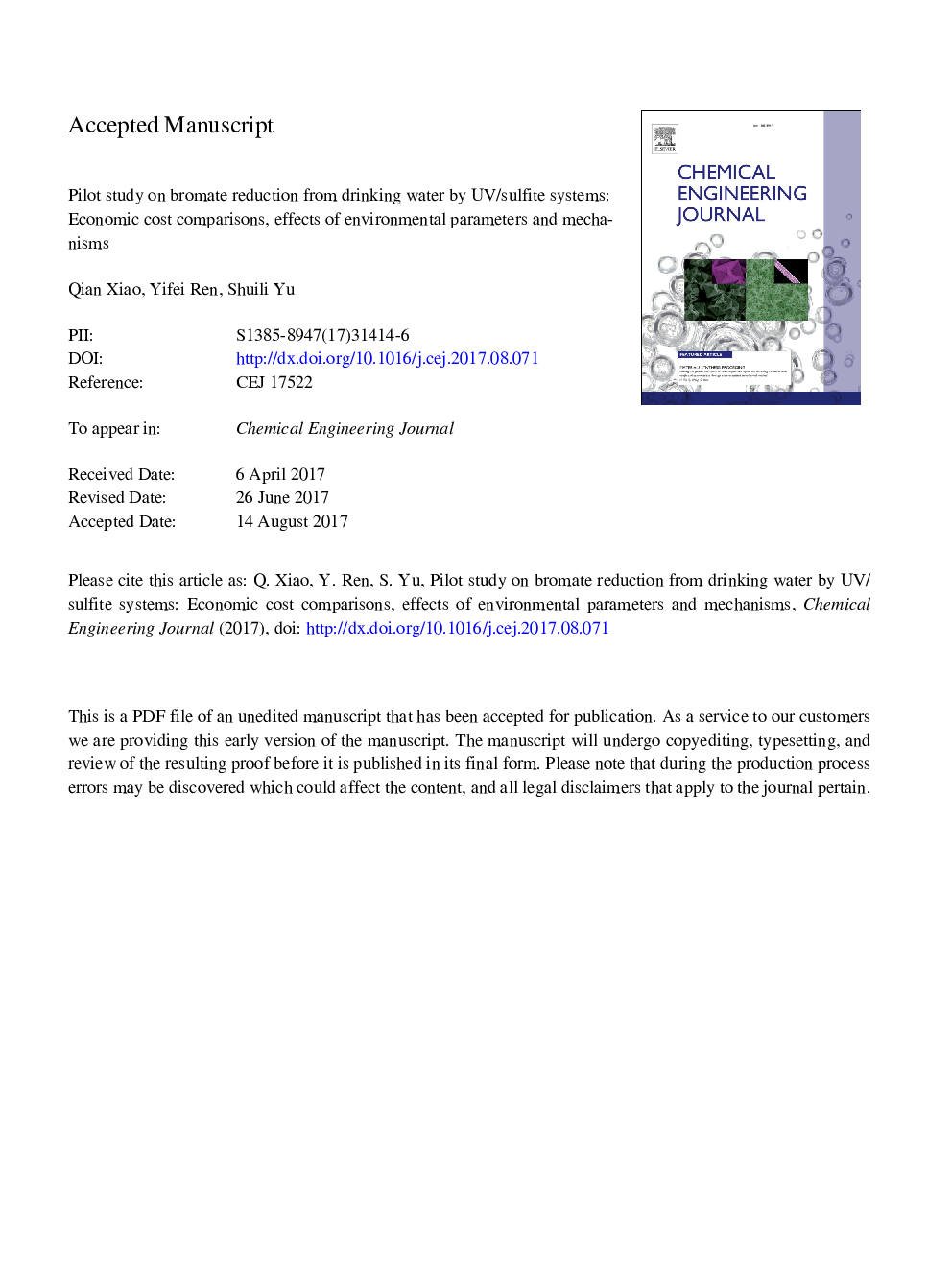| Article ID | Journal | Published Year | Pages | File Type |
|---|---|---|---|---|
| 4762946 | Chemical Engineering Journal | 2017 | 41 Pages |
Abstract
The degradation of bromate (BrO3â) with UV/sulfite processes attracts much attention because of its high removal rate and easier combination with ultraviolet (UV) disinfection. This pilot study demonstrated the effectiveness of UV/sulfite systems and further investigated influences of typical environmental parameters such as UV fluence, pH, concentrations of sulfite ([S(IV)T]), humic acid (HA), bicarbonate (HCO3â), and nitrate (NO3â) on BrO3â degradation. Results showed that the decomposition was increased with the enhanced UV irradiance and [S(IV)T], whereas a considerable improvement was observed with enhancing pH only over pH 4.5-8.0 ranges probably due to the variation of sulfite species with pH in UV/sulfite systems. In contrast, the dosing of 2-5Â mg/L HA proportionally suppressed BrO3â removal in UV/sulfite systems. The obvious inhibitory effect on removal kinetics suggests that HA acted primarily as a scavenger for active species. 2-8Â mM HCO3â addition slightly depressed BrO3â degradation, indicating a weak inhibitor of HCO3â in photochemical processes. Moreover, scavenging experiments with NO3â demonstrated that the aqueous electron was responsible for decomposition of BrO3â by UV/sulfite systems in pilot studies. All the bromine atoms in BrO3â were reduced to Brâ. Principal component analysis further substantiated that high NO3â and HA levels in authentic water inhibited the removal of BrO3â in a lower extent in pilot studies than that in laboratory experiments. The cost evaluation proved UV/sulfite processes to be economical, indicating its full-scale potential in BrO3â removal from drinking water.
Related Topics
Physical Sciences and Engineering
Chemical Engineering
Chemical Engineering (General)
Authors
Qian Xiao, Yifei Ren, Shuili Yu,
